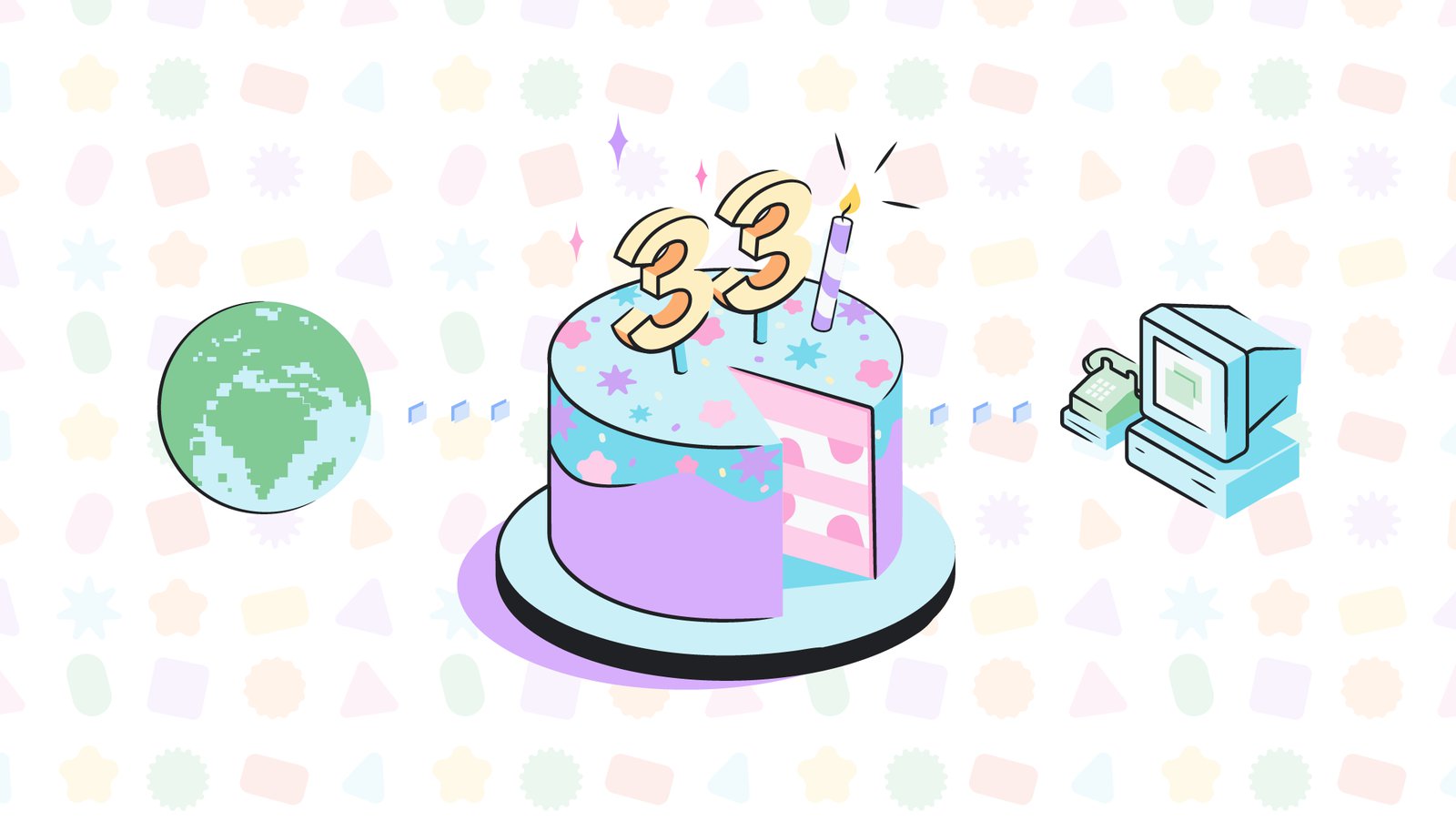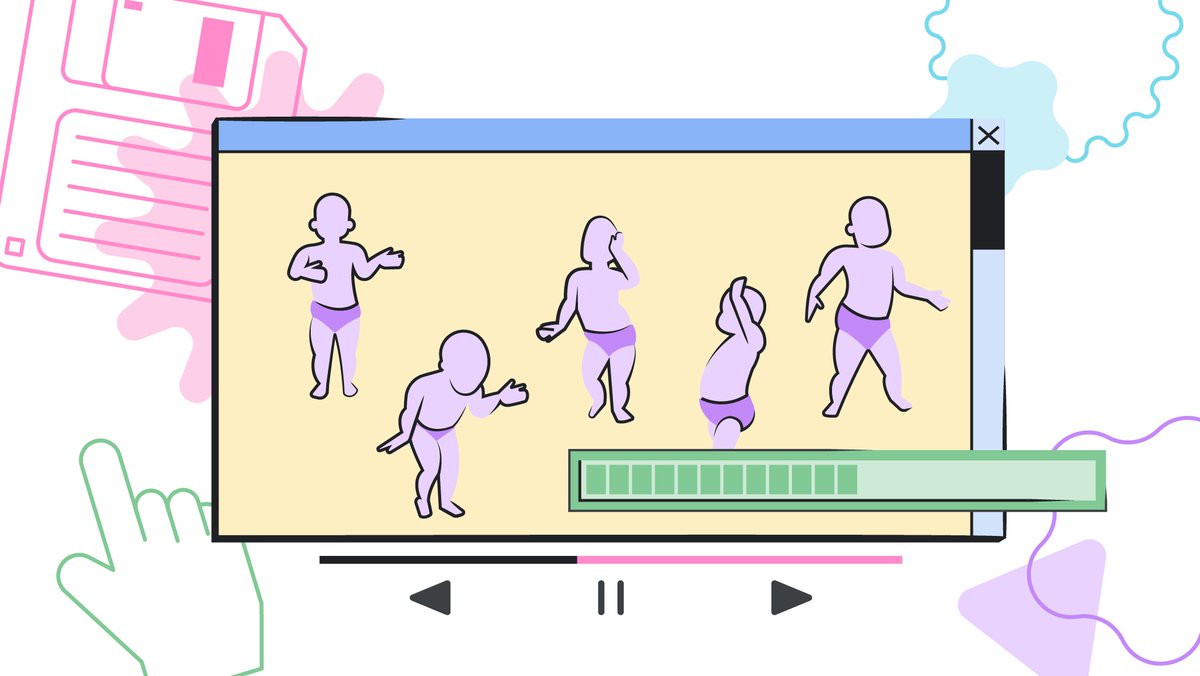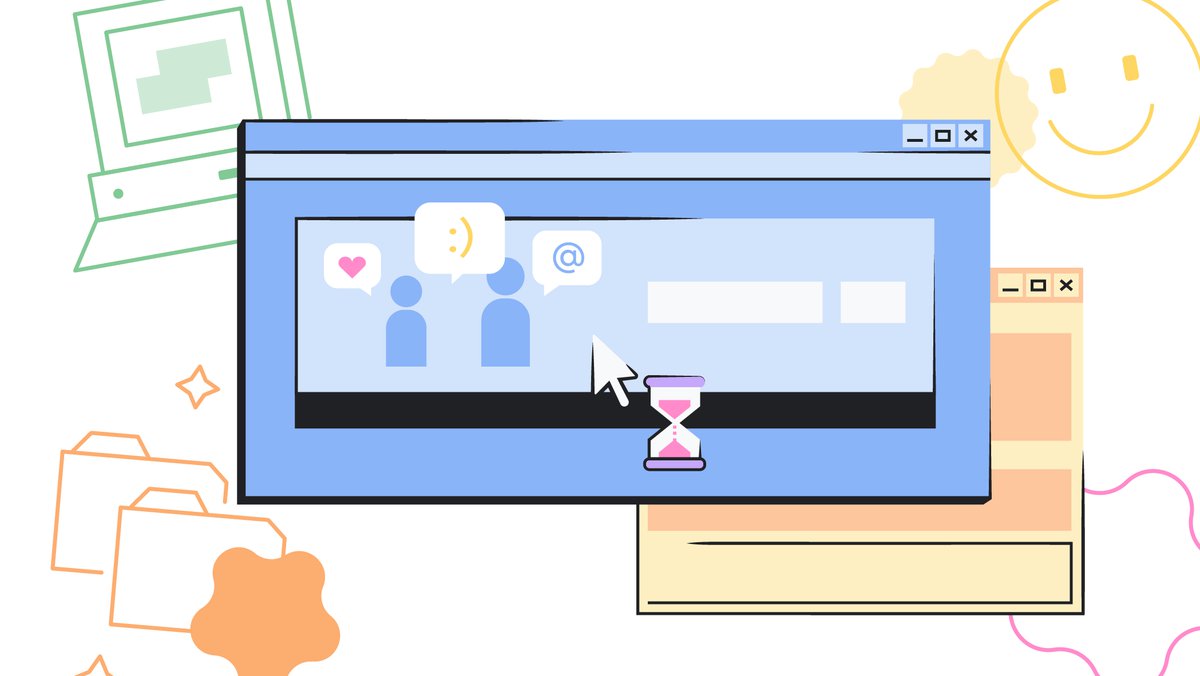History of the Web: How far creators have come

Today’s creators have many tools and platforms to produce digital content, build community, and generate revenue. But it wasn’t always this way. When the World Wide Web was still a strange new frontier, creators had limited options to share content online.
The creator’s web has evolved from very basic, hard-coded HTML pages with hit counters, guest books and animated GIFs to the dynamic, engaging websites, blogs, videos and social media channels we love to follow. So why are we feeling nostalgic for dancing babies, bouncing sheep and flying toasters? Because the web is turning 33!
The birth of the Web took place on March 12, 1989 when computer scientist Sir Tim Berners-Lee proposed a unifying structure to link information across different computers. He was truly the original web developer! To mark this occasion, let’s take a quick look back at some of the ways web creators got their humble start — and where we’re headed next.

Personal websites and web shrines
The first non-commercial, creator websites began cropping up in the mid-1990s. They were rudimentary, hard-coded HTML websites, often based around hobbies, pets and interests. Celebrity worship took the form of fan-built “web shrines” — websites dedicated to actors and musicians cobbled together with text, photos and clip art. But personal websites were hard to find. The Yahoo! directory, launched in 1994, grew popular because it allowed people to discover creators’ websites by category, from arts and entertainment, to environment and nature, to society and culture.
Web communities, web logs and forums
Founded in 1994, GeoCities offered free website hosting and a choice of themed “neighborhoods” to join. This enabled hundreds of thousands to create their first websites and become part of a community — a built-in audience who shared their interests, from video games to pottery to rock bands. The service was bought by Yahoo! in 1999 and shut down 10 years later.
In 1999, Blogger and LiveJournal launched their free online “web blog” platforms, putting simple publishing tools in the hands of creators (with Tumblr following years later). Though blogs were hosted on the blogging platforms’ websites, they allowed creators to build their own digital homes on the web.
Content forums such as phpBB began to proliferate by 2000, spawning creative and niche communities, giving people a means to share ideas without having to build websites or publish blogs. Reddit is a modern version of these forums.
Website publishing for the masses
WordPress was released in 2003, putting website development tools in the hands of common creators. This marked the democratization of publishing quality content on the web. You no longer needed to be a developer to create an attractive, functioning personal website!
Video for everyday creators
Hosting video on your own site was once very expensive, and videos were slow to load. In 2005, YouTube changed everything, giving creators a platform to publish their own videos. Vimeo and Dailymotion also helped to solve this huge infrastructure problem for creators.

Explosion of social media
With blogging, website building and video publishing in full swing, one problem was how to discover all this content. Search engines like Yahoo Search, Google and (the now defunct) AltaVista were one obvious means, while social bookmark managers like Digg and discovery platforms like Pinterest became important to creators as well.
These services still lacked the human touch many internet users craved, leading to the dawn of social media — starting with Friendster in 2002, MySpace and LinkedIn in 2003, then exploding with Facebook in 2004, followed by Twitter, Instagram and TikTok. Social media allowed web creators to share their content in new ways, reaching new audiences.
Web creation today
While social media content is proliferating wildly, creators know that they lose some control over their content by posting on these sites and apps. Some creators are now shifting back to building and owning their own home on the web — a website to host their own content, experiment with different monetization options, build stronger and more direct relationships with their audiences and create their own personal brands.
We’ve come a long way from the first web shrines. At Google for Creators, our mission is to help creators be successful on the web. We look forward to supporting you on your journey, and we can’t wait to see where the web takes us next.
